Tomato Source
By Ruth D’Alessandro, The Wildlife Gardener The Wildlife Gardener has, with regret, picked the last tomato of the year. But what a great year for tomatoes it has been. I usually grow about 50 tomato plants, expecting to lose 50% of plants to blight and botrytis, but this year those fungal heartbreakers have kept away and I picked fruit from all 50 right up until today. The outdoor tomatoes outperformed those in the greenhouse. Blight has now affected a couple of the plants, but it’s October, and it really doesn’t matter.
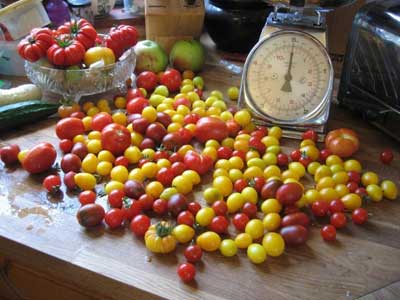
So how have I managed to keep the blight at bay? The weather helped. Although we didn’t have the Mediterranean 30°C + heatwave, I predicted a reasonable summer and we got an adequate one. I put all my tomato plants singly in large pots containing a mixture of home-made and commercial compost, and lined them up along every south-facing wall, fence and hedge I could find. I did not put any directly into the veg patch as blight spores can splash up from the soil and infect plants. I made sure I watered the plants thoroughly and regularly every morning. Just the soil, not the leaves. This gives the plants chance to absorb water, nutrients and light during the day with dry leaves. A mistake I made previously was to water in the evening, creating the cool, damp conditions that blight and botrytis thrive in.’Don’t put your babies to bed with wet feet’ is a great maxim for tomato growers. Regular watering also prevents blossom end rot, where the base of each affected tomato blackens. Blossom end rot occurs where the calcium uptake of the plant is interrupted by’drought or downpour’ erratic watering. It’s not as devastating as blight, but irritating when your beautiful tomatoes look as if they’ve sat down in tar. Contrary to accepted gardening wisdom that you should start feeding tomatoes only’when the first truss of fruit is set’ I gave the little plants weak tomato feed as soon as they were in their big pots. This did mean that they put on lush leaf growth from excess nitrogen, but the plants seemed to be stronger as a result, and I noticed no drop in fruit yield. I cannot claim to be an’organic gardener’ by Soil Association standards; while I don’t use pesticides and I prefer compost to commercial fertiliser, I’m not adverse to a touch of chemical assistance in the form of Bordeaux mixture (lime and copper sulphate) to control blight. I don’t enjoy using it: it covers the plants with a chalky residue and you have to wash the tomatoes before eating them, which doesn’t seem right or natural. However, a row of chalky tomato plants is less heartbreaking than a row of blackened, dying ones. I applied Bordeaux mixture just twice over the summer and, together with all the other measures taken, blight was thwarted. Did I somehow choose more blight-resistant varieties this year? I always choose’Black Plum’ from HDRA, which is billed as’showing some blight resistance’:
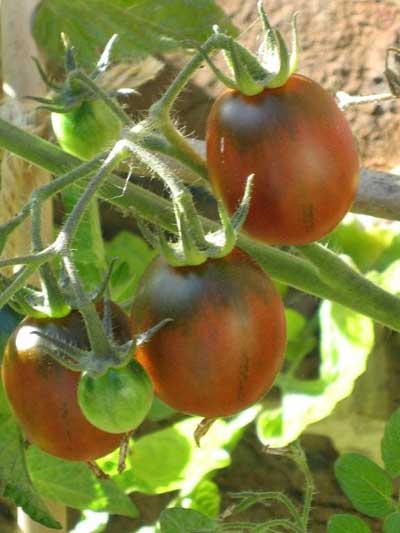
It’s a deeply sweet, honeyed tomato, lovely for eating raw or frying in olive oil with black pepper. I also grow’Yellow Pear’ and’Gardener’s Delight’ for that mini-tomato experience enjoyed by both the Junior Wildlife Gardeners, and lately, the foraging hens.
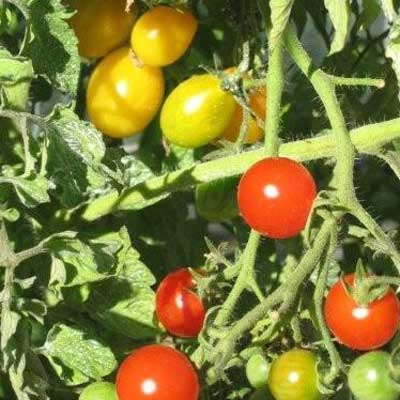
Also from HDRA, I chose’Yellow Candystripe’, an American heritage variety that yielded the biggest (600g!) tomato I have ever grown:
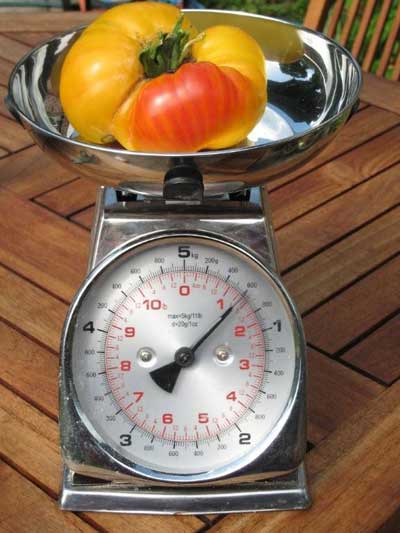
Unfortunately, like many American fruits, it compromised its flavour (OK, but not mouth-tingling) for size. While it looks pretty, sliced on a plate with other beefsteaks, the flavour does not thrill like some others. It resisted blight, though, which is what worries me about blight-resistant varieties. Will they taste any good? The real star of the tomato year was the Italian variety’Costaluto Fiorentino’ from Seeds of Italy. I planted these a bit late and they had to play catch-up with the others, but still they delivered:
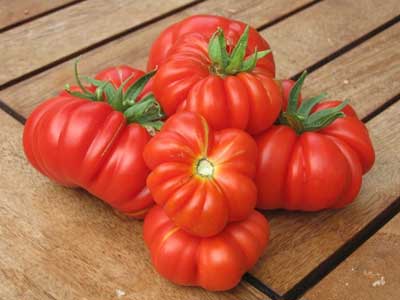
Knobbly, red and big, twisting into funny shapes, they had that knockout salivary-gland-tweaking acid sweetness of a perfect tomato. I didn’t grow enough of them. But then you never have enough Costalutos. They are first choice for next year. So, as I clear away the spindly remains of my tomato plants, I’m already looking forward to sowing next year’s toms. I know which ones I’m growing again, and the new HDRA catalogue will no doubt yield some new knobbly/stripy/elongated treasure to try. I reflect, with a tingle of pleasure, that 2009 was A Good Tomato Year. And not a bum variety in sight…
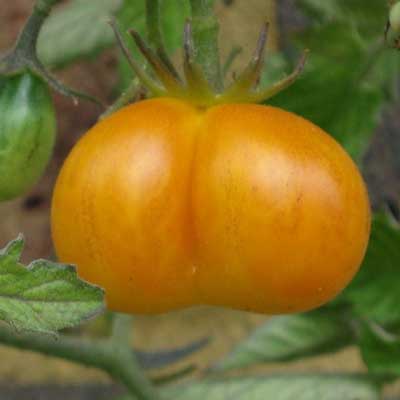
- Spurn Spawn! - 26th February, 2014
- Bluebells on wheels: axles of evil? - 2nd February, 2011
- Raising the ba: Wildlife and the Ancient Egyptian Book of the Dead - 8th January, 2011

how can I protect my pond with fregs and newts from being destroyed by the buyers of my house ?
The Ranger says: The animals are already protected to some extent under the Wildlife and Countryside Act – although their habitat is not. All you can do is hope that the new owners will have the same attitude as you. I’m afraid there’s no legal route you can follow except not selling the house.
Hi Bill, I think we were lucky with cropping this year, as late blight crept in in October and my potatoes had leaf blight. By removing very few blighted plants I hope there will be fewer spores for next year. I plan to grow a leaf-blight-resistant variety of potato. And of course we all look at wonderful tomatoes and hope that it will be better next year. 🙂
Consider yourself amongst the lucky. Here in the northeast U.S. (New England) we were struck with a major contamination of late blight (the same blight that caused the Irish potato famine) and our entire tomato crop was obliterated (as were ny neighbor’s potato crop and anything else in the nightshade family).
However, I rejoiced when I saw your photos of your wonderful tomato crop and am already looking forward to trying again next year.
Bill
Thank you! I can’t quite bring myself to use lovely fresh red tomatoes in chutney, but I have made some Italian sauces for the freezer and some sunblush tomatoes under olive oil. I’m not keen on green tomato chutney.
What an impressive harvest! Will you have enough to make tomato chutney?